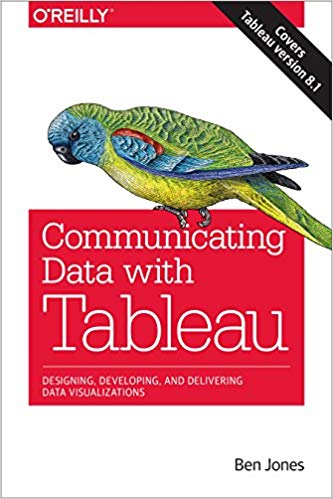This past week the inaugural Tapestry Conference was held in Nashville, Tennessee at the Union Station Hotel. Elissa Fink and Ellie Fields of Tableau, who I’m fortunate to work with, envisioned and organized the event. Around 100 journalists, researchers, bloggers, academics, and practitioners attended the event, which focused on storytelling with data.
Simply put, it was mind-blowing. What transpired there was so incredible, that I feel compelled to share some of the most salient points with you.
An emerging art form
One of the overall themes is that telling stories with data is important, but doing it well isn’t easy. It requires an analyst’s mind, a designer’s eye, a journalist’s pen, and a human’s heart working in harmony to weave a tapestry of insight. When it is done well, it’s beautiful to behold, and we saw a number of examples from the work that was presented.
Key Point #1: Tools are great, but it isn’t about the tools
Keynote speaker Jonathan Corum of the New York Times made it clear from the onset that we shouldn’t let technology drive. The focus shouldn’t be on the tools, nor should it be on the data, but rather it should be on the audience. Whatever tools you use to tell your story, the audience you design for should walk away feeling enlightened. Jonathan’s full slide presentation from his keynote is available online here.
Key Point #2: Hone in on the story
It can often be tempting to just quickly connect to data, create an elaborate dashboard, and publish to the web, convinced that your audience will be as enraptured with the result as you are. But, as Seattle Times Data Enterprise Editor Cheryl Phillips stated, “data without a theme is not a story”. She encouraged us to “avoid notebook dump” with data, and focus on the “nutgraf”, or the editorial heart of the story. The story is in the patterns, and as keynote speaker Pat Hanrahan of Stanford reminded us, “showing is not explaining.”
Key Point #3: Context is the key to understanding
Nigel Holmes brilliantly illustrated the power of context by asking two demonstrators to hold a 29 foot string across the front of the room in order to help us understand just how far Bob Beamon jumped in the Olympics in 1968. His point: we more fully grasped the magnitude of Beamon’s feat because we saw the distance in relationship to something else – the room we were sitting in (and how far Nigel himself was able to jump). Likewise, an infographic that shows the Queen Mary flipped upright and positioned next to famous buildings like the Empire State Building works because it takes the Queen Mary out of its original context – the harbor – and puts it into a different one – the city. We understand the size of the ship in a whole new way, and we feel enlightened as a result.
Key Point #4: It’s okay to be inspired by other people’s work
Hannah Fairfield of the New York Times talked about the evolution of the connected scatterplot graphics “Oil’s Roller Coaster Ride”, “Driving Shifts into Reverse”, and “Driving Safety, in Fits and Starts”. She related how each of these projects inspired the subsequent version. She also talked about the instant classic “Snow Fall” and how the group that created it was inspired by the book “The Invention of Hugo Cabret”. My take-away was that it’s good to have sources of inspiration, and we should always ask ourselves “what’s next?” The more we observe each other’s work and build off of it, the better we will become.
Key Point #5: Critique should be helpful and constructive
Bryan Connor of The Why Axis talked about how criticism in the field of data visualization has often intimidated newcomers, and in order to prevent this from occurring, critics should behave more like investigators than psychics, asking “why” a designer did something a certain way instead of making assumptions and passing judgments haphazardly. The importance of this point can’t be missed. Knowing the designer’s goal enables the critic to give better criticism. Feedback is important for the development of any field, so data storytellers should learn to both give and receive feedback well.
Key Point #6: We are narrative seeking creatures
Robert Kosara of Tableau and eagereyes.org introduced a helpful four quadrant model of data visualization that places “Visual Data Stories” in the top right quadrant since these types both tell a story and include depth that affords the reader the opportunity to explore their own stories. Again, achieving this quadrant isn’t easy to do. Kosara effectively challenged his audience to define what this quadrant looks like by leaving a conspicuous question mark in the upper right corner. As data visualizers, we are constantly publishing content – if we ask ourselves how we can better explain and at the same time allow the user to more deeply explore the story in the data, we’ll be moving in the right direction. Robert also posted some photographs taken at the event here.
Key Point #7: Pictures have incredible power
Cartoonist Scott McCloud brought the art of storytelling with pictures to a whole different level by showing the incredible power of images.
“All pictures are words. All pictures speak. All pictures have something to say.”
We witnessed the amazing ability to convey emotion through facial features, saw how our minds seek to impose a narrative to any two pictures shown side-by-side, and learned the power of drawing outside the box and challenging conventions. Scott’s presentation was nothing short of stirring, and I walked away feeling that I could communicate more with images than I ever imaged, including images that tell stories with data.
Conclusion
I feel very fortunate to have been at Tapestry, and I’m thankful for all the hard work the speakers put into preparing their materials. I was happy to be able to get involved as a contributor to the @tapestryconf twitter account, which we will be keeping live going forward. On a personal note, it was a thrill to meet with people in this field that I have been following and interacting with online for a while now. I’ve benefitted greatly from contact with them, and I can only wait in anticipation for next year…
Thanks,
Ben
PS. You can read notes taken by fellow attendees Enrico Bertini and Daniel Higginbotham.
Daniel Hom of Tableau created a #tapestryconf Twitter tracker, which you can use to see what people tweeted about during the event
Andy Cotgreave created a public list of people attending Tapestry 2013 here



Great post and awesome overview! Thank you very much for sharing.
You’re welcome Guilhes, I’m glad you found it interesting, and thanks for commenting.
Pingback: Five Links: Staying with the New | HR Examiner